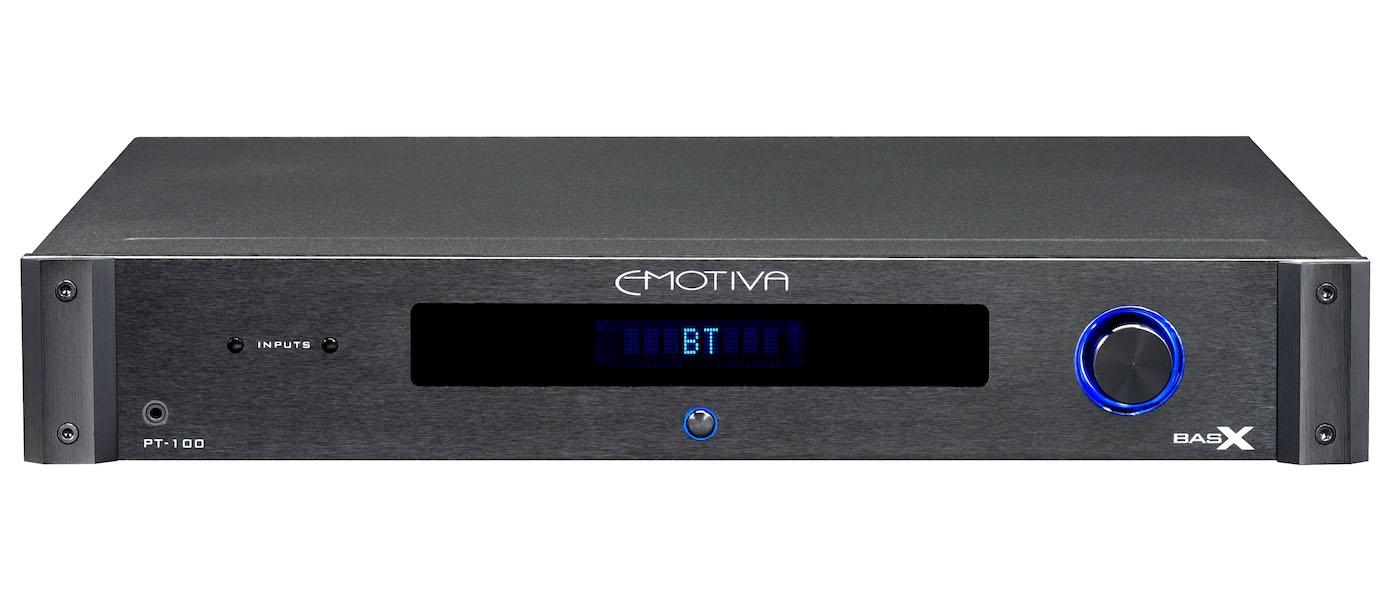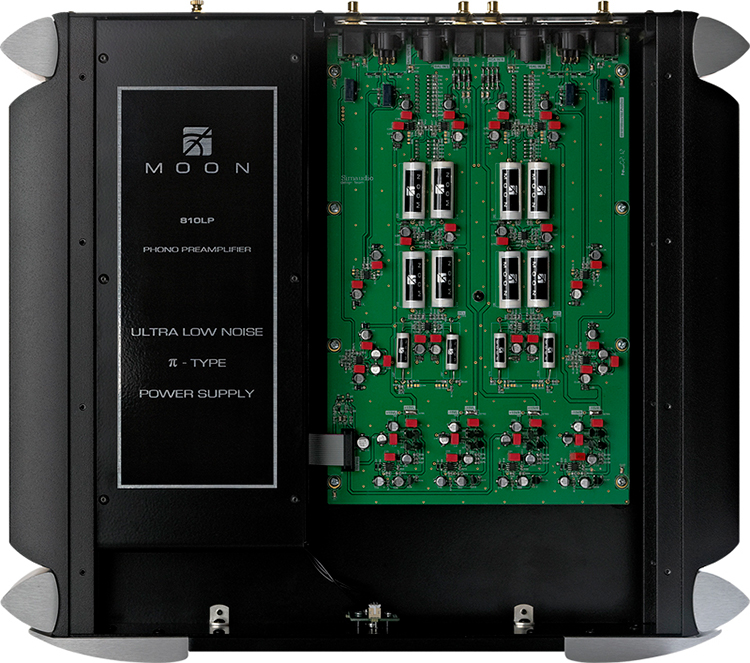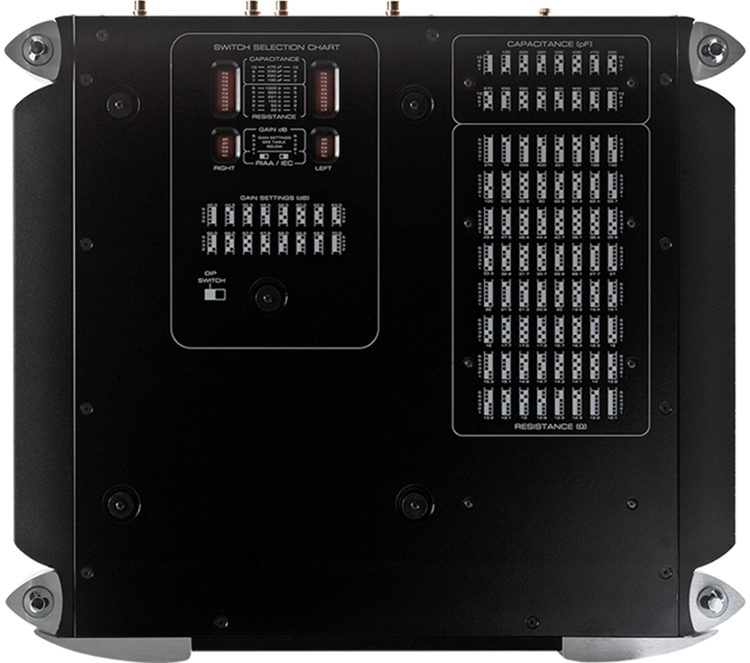
Moon by Simaudio 810LP Phono Preamplifier
- State of the art, best design this 36-year-old hifi company can make
- Highly adjustable
- Finish – black with a luster, it glows
- Music, right there in your living room
I think one of the best days an engineer can have is the day when management comes and says: “We want you to design the absolutely best (computer, car, phono stage) that you can, cost is not an object.” If that happened more often, we’d have more products like the 810LP from Moon by Simaudio. Weighing in at 40 lbs, with balanced and unbalanced inputs and outputs, a vast array of resistance and capacitance loading possibilities, you don’t even have to know what a phono stage is to realize that some serious effort has gone into making this thing.
Balanced and Unbalanced inputs (XLR / RCA):
1 pair / 1 pair
S/N Ratio (full scale @40dB gain):
115dBr
S/N Ratio (full scale @70dB gain):
95dBr
IEC Curve Effect:
-7dB @ 10Hz
Frequency response:
20Hz – 20kHz ±0.1dB
Crosstalk @:
1kHz -106dB
Output impedance:
50Ω
THD (20Hz – 20kHz):
0.0008%
Intermodulation distortion:
0.001%
Input overload @40dB gain (XLR / RCA):
200V RMS / 100V RMS
Input overload @70dB gain (XLR / RCA):
5mV RMS / 2.5mV RMS
Shipping weight:
40 lbs / 18 Kgs
Dimensions (width x height x depth):
18.75 x 4.0 x 16.8 in. 47.6 x 10.2 x 42.7 cm
Selectable Equalization:
Curves for Both the RIAA and the IEC Standards
Power supply:
Featuring a "Pi-type" Filter Comprised of 40,000uF of Capacitance and Dual Choke Inductance
12 Volt:
Trigger Input and Output for Remote Operation
Ultra rigid chassis construction to:
Minimize the Effects of External Vibrations
MSRP:
$13,000
Company:
SECRETS Tags:
Moon by Simaudio, Simaudio, 810LP, Phono Stage, Balanced, Preamplifier Reviews 2016

The engineers of Simaudio did their best to follow the enlightened instruction to make the best that they could. The specs say 40 lbs but the 810LP feels like it weighs even more, perhaps because at almost 19” wide and 17 deep it is a bit unwieldy. Of course once you’ve dialed in the gain and have it is situated on a suitable shelf the size won’t matter except when you want to show it off, which you might. The fit and finish is superb. My review sample is all black but even those with an all silver face or two-tone have a black body and there’s something about this black. It has a glow, a luster. Not sure how they’ve done that but I want more of it.
The sturdy chassis and a large toroidal transformer inside account for much of the weight. Add an enclosure of coated 14-gauge steel around said transformer. Then it is filtering, power supply regulation and then some more power supply regulation.
A Pi filter cleans up the mains for the transformer, the output of which will then encounter 24 stages of power supply regulation, namely Simaudio’s iDCf (Independent Inductive DC Filtering); 1 inductor for each and every IC in the audio circuit’s signal path, and then on the circuit board itself, 4 stages of the M-LoVo discrete DC regulation circuit that Simaudio has designed and used only in their highest-end products.
Secrets Sponsor
The circuit board is of the four layer variety, dedicating a solid plane of copper to the power supply and another to the ground thus providing shielding to the circuit traces in between. Said circuit board is supported at five points by gel mounts to control any vibrations that manage to make it through the heavy chassis. On that circuit board are some custom designed parts including capacitors matched to within 1%.
Gain and cartridge loading adjustments are made by an array of dip switches mounted on the bottom of the chassis. This makes adjustments a bit of a chore as the unit (which is heavy, did I mention that?) has to be unplugged, removed from its shelf and flipped upside down. Once you’ve done all that it’s easy. Choose from 16 capacitance settings, 64 resistance and 16 again for the gain (40 to 70db). There’s also a switch (per channel) for choosing between the IEC and RIAA equalization curves. My sample arrived with IEC selected. I switched to RIAA and left it there.
It’s quite alright to flip this beast on its back, by the way. That’s one fact not mentioned in the otherwise comprehensive and readable user’s manual.
Is that enough? Oh, I forgot to say that it’s fully dual-mono and fully balanced. As in dual-differential balanced wherein the positive and negative signals each enjoy their own amplification around a center point. Beware components that claim to be balanced merely by the offering of a balanced input or output.
If it’s not enough, well you’re being silly then but you can upgrade with the 820S power supply. With “just” the built in power supply the total harmonic distortion is specified as a vanishingly low 0.0008% and the signal to noise ratio is equally amazingly low, it depends on the gain setting of course but somewhere around 100db. Other specs are also of the ‘out of this world’ variety. Let us set these engineers loose more often!
Secrets Sponsor
All of this of course takes some serious shelf space. I could barely fit the 810LP onto a Sovereign Series shelf (by Lovan). ‘Barely’ as in the unit has to be slightly skewed so that the rear connectors are able to take cables which are carefully routed around the center-rear post of these shelves. Said skew-age means that one of the front feet of the phono stage is within ¼ inch of the front of the shelf. If the 810LP is to stick around, I’ll have to make a slightly larger shelf.
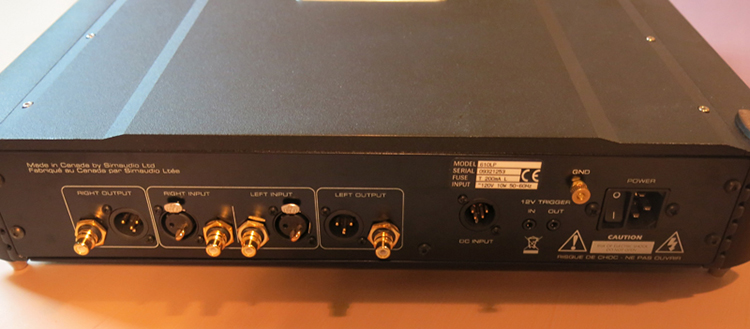
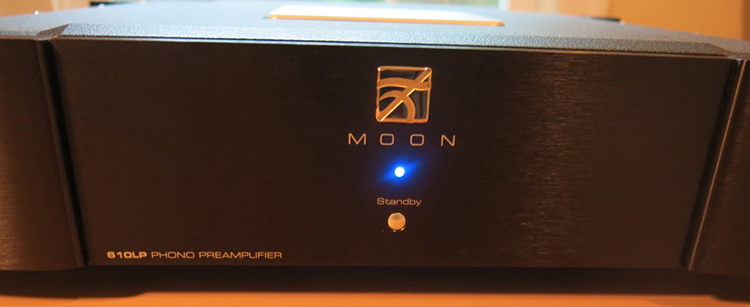
Not so fast! A component like this, with lots and lots of circuitry, fed at low levels as we see from a phono cartridge is going to require significant break-in. Lionel Goodfield of Simaudio recommended “350 hours or about 2.5 weeks.” I think the 350 hours (which really closer to 3 weeks) is a very accurate number as, after diligently counting each day of the recommend two and a half weeks I did find that a little more break-in happened while listening. The bulk of the break-in was accomplished with the Granite Audio Phono Burn-In CD (Model #CD-101.1 Moving Coil & MM Phono Burn-In & RIAA Test CD)
Kindly provided by Don Hoglund, President of Granite Audio, this CD is a gem. There aren’t any other solutions that I could find for a phono stage set to MC gain levels. This is something to watch carefully I believe, had I kept the gain high and used a typical break-in CD, I would have certainly been overloading the outputs of the 810LP. Given the fact that most CD players drive their outputs to up to twice the expected 1V swings for a line level connection there seems to be the possibility of causing some damage. I set the gain on the 810LP to 60db for the break-in period and then settled on 66db for listening. With my Dynavector XX2 Mk2 cartridge, which outputs only 0.28mV, even the maximum 70db setting might be in order. It’s a bit of a chore (see above) to adjust the gain so I’m sticking with 66db for now.
While balanced inputs are available on the 810LP, balanced phono cables are still a rarity so I connected my Nottingham Space Deck via the conventional single ended inputs and then connected the balanced-out’s to my Simaudio P8 preamp via Nordost Heimdall 2 cables. I used a Shunyata Venom 3 power cord throughout the review period.
There is some debate going around the audio industry about the use of a balanced input on a phono stage. Seems like such a good idea for these low level signals and the cartridge output is naturally balanced right? I finally figured out that even though there is a ground wire, it is not referenced to the plus and minus signals from the cartridge. This is not the conventional balanced signal that we typically pass around between components. I pestered Lionel Goodfield for Simaudio’s thoughts on all this: “cartridges do indeed produce a balanced signal, but the signal is not dual-differential. As well, there is no reference to ground, so yes there is a floating ground.” Well, I might try a balanced connection someday just for fun but it helps to know that I might not be missing out after all. What this is telling us is that with a single ended connection to a cartridge, the receiving circuit will still amplify the complete difference between the plus and minus while utilizing chassis ground as ground. What I don’t know then is what happens when a balanced connection is used. I think that the initial inputs to the amplifying circuit must be exactly the same or very similar to the single ended connection and that the ground wire and the ground connection from the turntable are basically ignored for the purposes of amplification. That is my theory but I won’t claim it belongs to me.
Enough with all that! How did it sound!? Umm… uh.. “Wow” might be the way to say it. Music is profound through this thing. Compared to the venerable LP5.3 (also by Simaudio) which I have happily enjoyed for years, I heard way more detail in attacks and the highs. I could hear cymbals in detail – as in, that cymbal there sounds different from the one over there and both of them sound like cymbals, not a splashy sound. Drum sticks hitting drum heads become almost visual, the attack of guitar notes or piano, also palpable and ‘in the room’. Vocals rendered with so many detail on my records that I hadn’t heard before. The uninitiated are not aware of how much information is in those grooves. Way more than on CD or even the high res audio files I’ve heard, it’s not even close. When I was using the LP5.3, vinyl was always more enjoyable than digital and had moderately more information, with the 810LP, way way more information.
This would be a good point to add that I clean my records with the Audiodesk Systems Ultrasonic Cleaner.
With specs on a phono stage as good as this one it makes sense to have a more signal and less noise to amplify. Besides, clean records last longer and when they sound this good you’ll need that because you’ll be wanting to play them. I found this was the case for all the records I played, even when the recording or production was not the best, the 810LP brought the music into my living room. I think with the LP5.3, I gravitated a little towards the records that happened to sound the best, but while with the 810LP, which can certainly distinguish good recordings from bad, it doesn’t matter as much, all records are lifted, so it’s just more a matter of what music I want to hear.
I noticed two phenomena related to my record collection once the 810LP was installed. One was that once I listened to one record by an artist, even if I had heard it many times, I had to listen to all that I had from that artist. This happened with Jenny Lewis in all her incarnations, likewise with Radiohead, Blonde Redhead and the Roxy Music studio albums box set. The other thing was that records that I thought were bad recordings weren’t so bad, maybe great in fact but they evidently needed a great phono stage to make sense of them. This is what I heard the Moon by Simaudio 810LP do that I haven’t heard before. With so many records, from whatever genre, it made them sound ‘right’. As if the band or singer was in my living room.
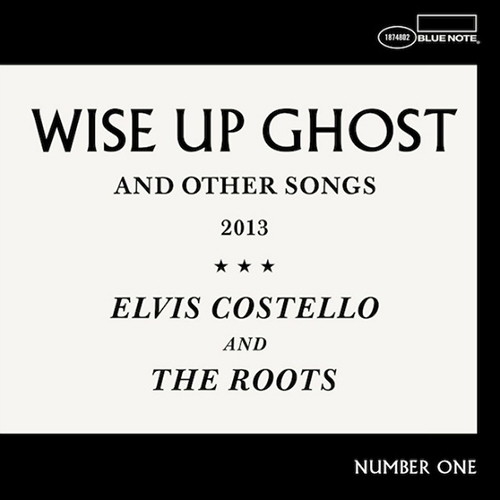
Whatever I was hearing before wasn’t an issue with the record or not solely with the record. Elvis Costello’s effort with The Roots, “Wise Up Ghost”, is an example of that. I can’t say that I’d completely given up on it, but in the past, when I would come across it I would put it back on the shelf because I really had to be in the mood for that particular music (sparse, guitar and drums) to get past what I thought was a too-digital sounding recording. I can report now that the recording is fine. Great even.

There was a limit to this phenomenon number two however. I had a cranked-up session with Bjork’s incredible “Volta”. The 810LP was showing me that the rest of my system was better than I had known and the same for this record, and I already liked them both! So, I needed more Bjork. That’s right, I’ve got a fever and the only prescription is: More Bjork!.
“Biophilia” seemed a good choice to cool down slowly and hopefully, be able to get to sleep. Dang if that record doesn’t have a bit of digital sheen to it. Didn’t know that either but it might explain why the record hasn’t gotten much play in my household. I still listened to the whole thing but it was a bit of a let-down after “Volta”.
I noticed a similar effect in my listening room. With the 810LP it’s good, the room is fine. Previously I have employed a series of amateur sound treatments that get installed during listening sessions. Various cushions and pillows that I sometimes pile up in front of or behind the speakers just seem less necessary with the 810LP in the playback chain. I can still hear a difference with my various tweaks but it’s a harder call and there’s nothing compelling me to do them.
Some audiophile notes: Soundstage: Wide and deep. The band is there in my living room and it’s a tight fit, I’m sitting right between the guitar player and the singer. Bass: Gobs, more than I knew my system could do (dang, all these years and who knew!?). Treble: effortlessly extended. Midrange: Liquid and sweet. At all frequencies the Moon by Simaudio 810LP could not only produce the note but effortlessly produce the overtones as well so timbre is exquisite. The crunchy sounds on Bjork’s “Volta” are crunchier than I knew. Pace, rhythm and timing: Yes, music moves and the listener goes along with it.
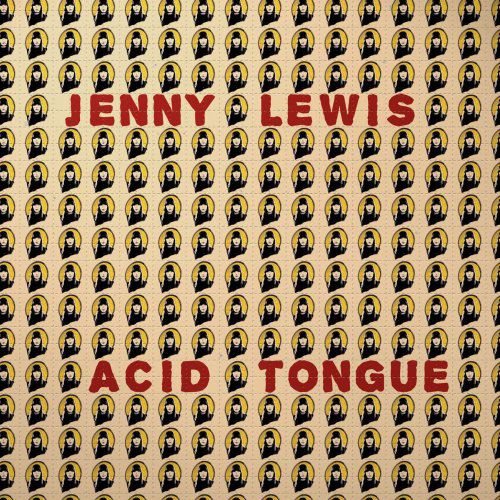
A record that I rediscovered due to phenomenon number one listed above is “Acid Tongue” by Jenny Lewis. To my regret I haven’t seen this incredible artist live except on TV where the entire endeavor seems too easy for her and the LA-based musicians she gathers. It doesn’t look like rock and roll if the musicians aren’t breaking a sweat. I guess they save it for the studio because the emotion is all there on “Acid Tongue”, and the production is equal to the musicianship. It would make any system shine, with the 810LP it rocks-it to say the least.
Macrodynamics are on display when a song that is inherently loud like “The Next Messiah” which over the course of nine minutes does have a couple of quieter moments but mostly it is loud and getting louder. The 810LP delivers all that while keeping the instruments distinct but part of a coherent, musical, whole, without breaking a sweat. I guess I want my musicians to sweat but my playback system should be able to easily handle whatever is on the record. Listening to this one was a combination of toe tapping and shaking my head in disbelief. Occasionally looking over at the turntable to make sure there was only one groove producing all this.
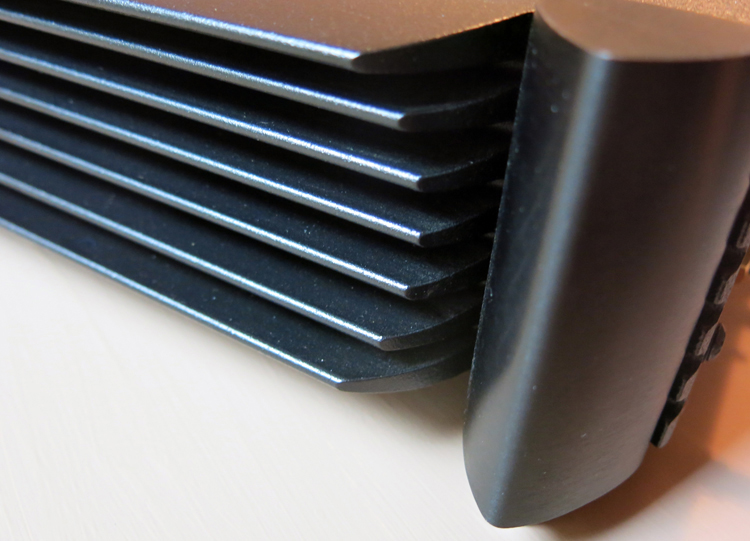
In the microdynamics category, the newest record from Debendra Barnhart, “Ape in Pink Marble” is quiet and intimate throughout. Everybody and everything is close-miked. Listening with the 810LP in the chain, it seemed I could tell exactly how close (about five inches for the guitar, a little more for the drums and less for the vocals). This record was repeated every night for about a week. This brings me to another phenomenon I have noticed since I’ve been reviewing this beauty: Less trips to the record store. Who has the time? I have records, and I need to listen to them.
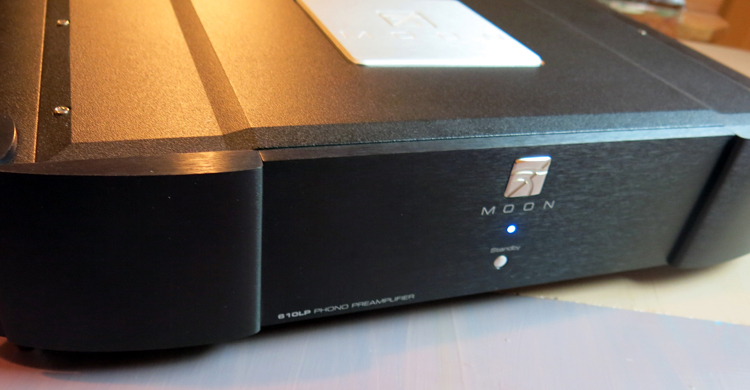
The Price of a Cost-no-object Component is Going to be High. But, What is the Value of Having Music, Real Music, in Your Home? THE MOON BY SIMAUDIO 810LP is a Champion and Will Likely Become Part of a Daily Ritual.
- Delivers music.
- Incredible build quality and looks.
- Makes my record collection better, more valuable to me.
- Well this is hard. I don’t know if there’s any “more” to be had. A lower price would be nice for everyone of course but there is already the Moon by Simaudio 610LP which has inherited much from the 810LP and has a magic of its own. Many vinyl nuts have two turntables or two tonearms on a single table and so could use an additional input.
Here’s how people describe improvements in digital playback: “It sounds more analog.” With vinyl playback it’s a little trickier because even with a phono stage costing a small fraction of what this one does you can really enjoy the experience. With vinyl playback there’s generally not anything that needs to be corrected (as long as the record is properly cleaned) so the description for improved sound in the analog realm is: “Well, there’s more.” Exactly. More timbre, more dynamics, more vocals, more music. If there’s anything more in the grooves of my records than what the Moon by Simaudio 810LP phono stage was revealing, I don’t know about it. This is the current state of the art.
Excuse me while I climb on my soap box: The real test of hifi is not what you can hear in A/B comparison, it’s: How long and how much do you listen? How intently and how much do you enjoy it? Do you look forward to doing it again? With the Moon by Simaudio 810LP I’ve gone from one record per night to several and I look forward to it every day and so even though the cost is steep, I’m buying the review sample.


